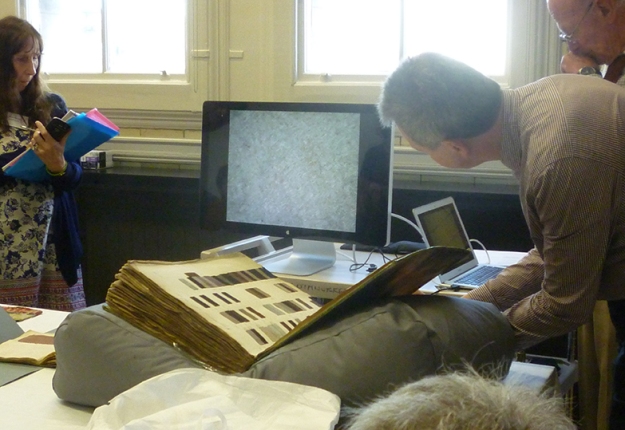The Cassimere Insanity Part I
If you’re visiting because you’ve heard about my article A Brief History of an 18th-Century Woven Cloth: Cassimere in the Winter 2019 Spin Off, welcome.
Honestly, that’s what it is, insanity. I just didn’t realise it until I’d dug the hole too deep to climb out:
I had to keep going all the way to the other side.
I am deeply curious about how yarns were spun in England before the Industrial Revolution. In the Middle Ages England was the leading producer of woollen textiles in Europe: across a wide swathe of the country you can still see the ‘wool churches‘, magnificent structures paid for by the profits of the medieval wool trade, which is to say people buying and selling wool fibre, yarn and fabrics. ‘The medieval wool trade’ … four words that encompass centuries of skill needed to breed sheep producing different types of wool, to develop the hand spinning, dying, weaving and finishing skills to spin the different types of yarn needed to create different cloths that could then be finished to create some of the most beautiful and desirable fabrics known in Europe at that time. In England at that time skilled hand spinning was so fundamental that we have little information about how fibre was spun except in illustrations: everyone knew how to spin, so there was no need to document it. Nonetheless surviving fabrics can tell us something about the fibres and skills used in their construction.
the beginning
In 2014 I was invited to be one of the spinners demonstrating techniques at John Styles’ ‘Spinning in the era of the spinning wheel’ workshop at the Victoria and Albert Museum Clothworkers’ Centre in London. Historians and fibre arts handworkers met to discuss the making of an array of fabrics from the V&A’s immense collection. One of the items on display was a book of fabric samples, ‘T.350-1989: Bound sample book containing different types, qualities and colours of cassimere or kerseymere cloth.’ I’d first seen cassimere (also known as kerseymere) mentioned in Kerridge’s Textile Manufactures in Early Modern England as a cloth invented by Francis Yerbury and patented by him in 1766; I remembered it because of the name, which I had read somewhere is thought to have been derived from ‘cashmere’ to reflect its softness, and because it had never occurred to me that a fabric could be patented. And now here it was in front of me, or at least examples of what were known as cassimere in 1795.


Note that my finger is NOT TOUCHING anything.
It’s hovering about 1cm above the fabric to give some idea of scale.
I was entranced. Moths and time had removed some patches of the surface fibre from one swatch (the one I photographed), revealing the twill structure and the beautifully-spun yarn. There were many other wonders spread out on the tables, but I left the workshop determined to find out more about this thing called cassimere. Kerridge focuses on the history of textile manufacturing, not the textiles themselves, and mentions cassimere again only as being responsible for bringing weavers into employment in large workshops, which was “possible because the looms were narrow and necessary because the weaves were new and intricate [compared with earlier standard weaves].”
The search for information
The internet rapidly made clear that cassimere/kerseymere continued in production until the 20th century and beyond, but also that these were very different fabrics from that patented by Yerbury… Aha! The patent! We were now living in Canada, so I couldn’t just pop down to the British Library in London. I emailed the Business & IP Centre asking if there was any way I could find a copy online, and will be eternally grateful to the staff member who noticed I was writing from Canada and sent me a PDF.
Yerbury’s patent 
Page One of Yerbury’s patent.
Greetings from the 21st century, Francis. But I wish you’d given me more information! The meat of the patent is on pages 2 and 3, where Yerbury’s ‘New Invention’ is contrasted with the ‘common method of making cloth’. In short:
Common cloth warp is spun with a lot of twist, the weft with as little twist as possible and about 2/3 thicker than the warp, and the two should have different twist directions in order that they interlace tightly when woven. The fabric is a plain weave and the final fulled cloth is thick, water-resistant and durable.
Yerbury’s new Invention warp and weft are spun in the same manner “nearly about the same degree of smallness, weight and twist”. There is no specific weight or thickness of yarn but it should be spun from soft, good wool, all Spanish (i.e. merino) or a mix of Spanish and English. He describes two kinds of cloth distinguished in the weaving; one is clearly a straight twill, right or left; the other “quilled in the weaving with a flat whale [wale]” defeats my current understanding. According to the Google Books preview of The Dictionary of Fashion History, Beckinsale’s The Trowbridge Woollen Industry mentions only twill weave for cassimere.
Yerbury developed his new ‘cassimers’ fabrics to fill a niche in the market, which at that time was virtually crying out for lighter wools suitable for wear in warmer climates. But on the third page of his patent he mentions another reason for devising an innovative fabric: not only was the common cloth “hot, inconvenient and heavy for the summer wear at home and warmer climates abroad”, but it “hath also been introduction of many slight and whimsical things from our great rivals in trade the French”. In other words, the French were saying rude things about heavy, traditional English broadcloth.
So this is how I discovered cassimere. In Part II I’ll tell you how I found more information and began spinning.
